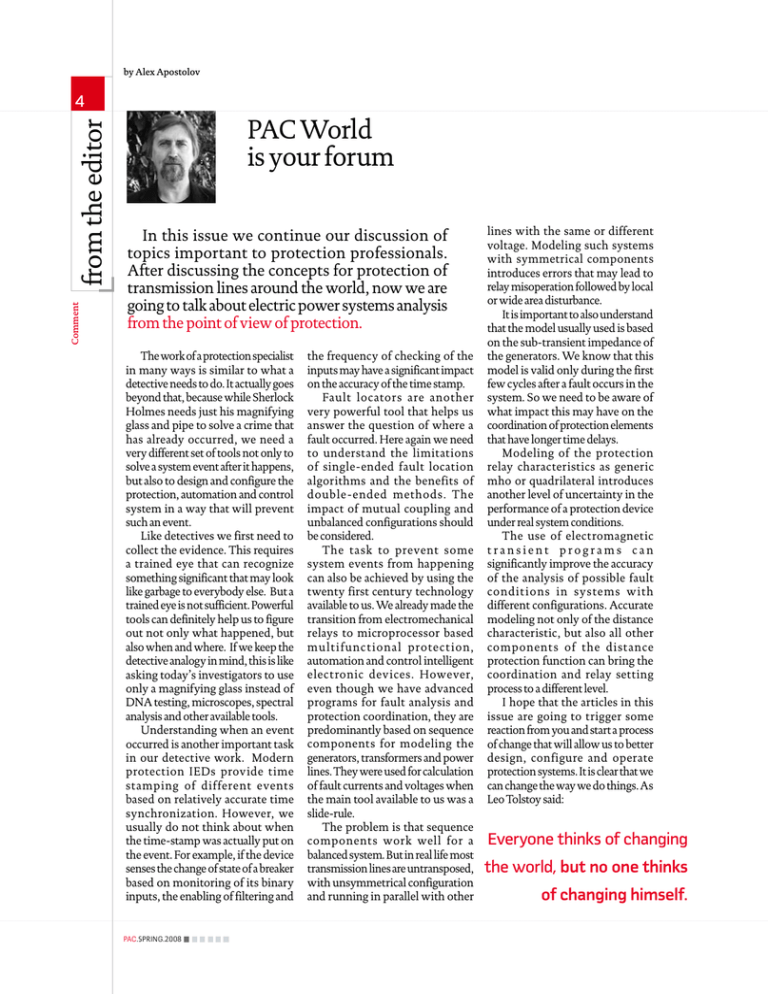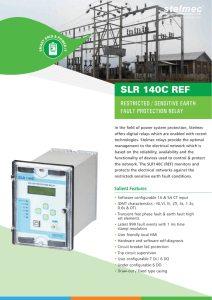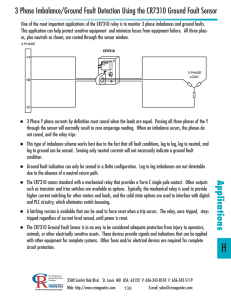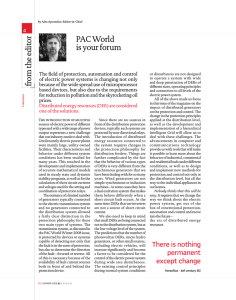or edit the om
advertisement

by Alex Apostolov Comment from the editor 4 PAC World is your forum In this issue we continue our discussion of topics important to protection professionals. After discussing the concepts for protection of transmission lines around the world, now we are going to talk about electric power systems analysis from the point of view of protection. The work of a protection specialist in many ways is similar to what a detective needs to do. It actually goes beyond that, because while Sherlock Holmes needs just his magnifying glass and pipe to solve a crime that has already occurred, we need a very different set of tools not only to solve a system event after it happens, but also to design and configure the protection, automation and control system in a way that will prevent such an event. Like detectives we first need to collect the evidence. This requires a trained eye that can recognize something significant that may look like garbage to everybody else. But a trained eye is not sufficient. Powerful tools can definitely help us to figure out not only what happened, but also when and where. If we keep the detective analogy in mind, this is like asking today’s investigators to use only a magnifying glass instead of DNA testing, microscopes, spectral analysis and other available tools. Understanding when an event occurred is another important task in our detective work. Modern protection IEDs provide time stamping of different events based on relatively accurate time synchronization. However, we usually do not think about when the time-stamp was actually put on the event. For example, if the device senses the change of state of a breaker based on monitoring of its binary inputs, the enabling of filtering and PAC.SPRING.2008 the frequency of checking of the inputs may have a significant impact on the accuracy of the time stamp. Fault locators are another very powerful tool that helps us answer the question of where a fault occurred. Here again we need to understand the limitations of single-ended fault location algorithms and the benefits of double-ended methods. The impact of mutual coupling and unbalanced configurations should be considered. The task to prevent some system events from happening can also be achieved by using the twenty first century technology available to us. We already made the transition from electromechanical relays to microprocessor based mult ifunc t ional protec t ion, automation and control intelligent electronic devices. However, even though we have advanced programs for fault analysis and protection coordination, they are predominantly based on sequence components for modeling the generators, transformers and power lines. They were used for calculation of fault currents and voltages when the main tool available to us was a slide-rule. The problem is that sequence components work well for a balanced system. But in real life most transmission lines are untransposed, with unsymmetrical configuration and running in parallel with other lines with the same or different voltage. Modeling such systems with symmetrical components introduces errors that may lead to relay misoperation followed by local or wide area disturbance. It is important to also understand that the model usually used is based on the sub-transient impedance of the generators. We know that this model is valid only during the first few cycles after a fault occurs in the system. So we need to be aware of what impact this may have on the coordination of protection elements that have longer time delays. Modeling of the protection relay characteristics as generic mho or quadrilateral introduces another level of uncertainty in the performance of a protection device under real system conditions. The use of electromagnetic transient programs can significantly improve the accuracy of the analysis of possible fault condit ions in systems w ith different configurations. Accurate modeling not only of the distance characteristic, but also all other components of the dist ance protection function can bring the coordination and relay setting process to a different level. I hope that the articles in this issue are going to trigger some reaction from you and start a process of change that will allow us to better design, configure and operate protection systems. It is clear that we can change the way we do things. As Leo Tolstoy said: Everyone thinks of changing the world, but no one thinks of changing himself.











